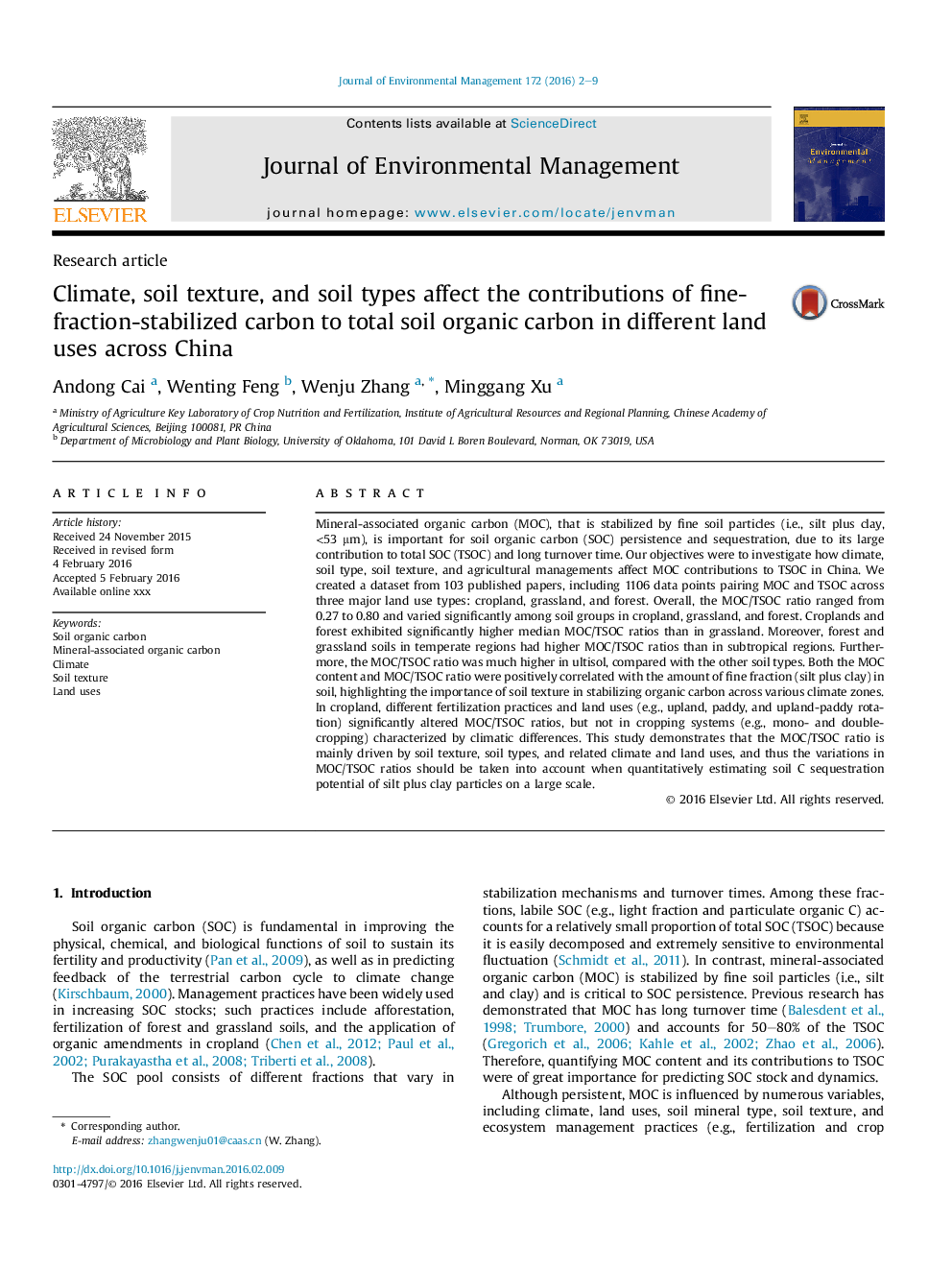| کد مقاله | کد نشریه | سال انتشار | مقاله انگلیسی | نسخه تمام متن |
|---|---|---|---|---|
| 7480536 | 1485240 | 2016 | 8 صفحه PDF | دانلود رایگان |
عنوان انگلیسی مقاله ISI
Climate, soil texture, and soil types affect the contributions of fine-fraction-stabilized carbon to total soil organic carbon in different land uses across China
ترجمه فارسی عنوان
آب و هوا، بافت خاک و انواع خاک به سهم کربن تثبیت شده با کیفیت کربن تا کربن آلی کربن در کارهای مختلف زمین در سراسر چین تاثیر می گذارد
دانلود مقاله + سفارش ترجمه
دانلود مقاله ISI انگلیسی
رایگان برای ایرانیان
کلمات کلیدی
کربن آلاینده خاک کربن آلی مرتبط با مواد معدنی، آب و هوا، بافت خاک، زمین استفاده می کند،
موضوعات مرتبط
مهندسی و علوم پایه
مهندسی انرژی
انرژی های تجدید پذیر، توسعه پایدار و محیط زیست
چکیده انگلیسی
Mineral-associated organic carbon (MOC), that is stabilized by fine soil particles (i.e., silt plus clay, <53 μm), is important for soil organic carbon (SOC) persistence and sequestration, due to its large contribution to total SOC (TSOC) and long turnover time. Our objectives were to investigate how climate, soil type, soil texture, and agricultural managements affect MOC contributions to TSOC in China. We created a dataset from 103 published papers, including 1106 data points pairing MOC and TSOC across three major land use types: cropland, grassland, and forest. Overall, the MOC/TSOC ratio ranged from 0.27 to 0.80 and varied significantly among soil groups in cropland, grassland, and forest. Croplands and forest exhibited significantly higher median MOC/TSOC ratios than in grassland. Moreover, forest and grassland soils in temperate regions had higher MOC/TSOC ratios than in subtropical regions. Furthermore, the MOC/TSOC ratio was much higher in ultisol, compared with the other soil types. Both the MOC content and MOC/TSOC ratio were positively correlated with the amount of fine fraction (silt plus clay) in soil, highlighting the importance of soil texture in stabilizing organic carbon across various climate zones. In cropland, different fertilization practices and land uses (e.g., upland, paddy, and upland-paddy rotation) significantly altered MOC/TSOC ratios, but not in cropping systems (e.g., mono- and double-cropping) characterized by climatic differences. This study demonstrates that the MOC/TSOC ratio is mainly driven by soil texture, soil types, and related climate and land uses, and thus the variations in MOC/TSOC ratios should be taken into account when quantitatively estimating soil C sequestration potential of silt plus clay particles on a large scale.
ناشر
Database: Elsevier - ScienceDirect (ساینس دایرکت)
Journal: Journal of Environmental Management - Volume 172, 1 May 2016, Pages 2-9
Journal: Journal of Environmental Management - Volume 172, 1 May 2016, Pages 2-9
نویسندگان
Andong Cai, Wenting Feng, Wenju Zhang, Minggang Xu,
